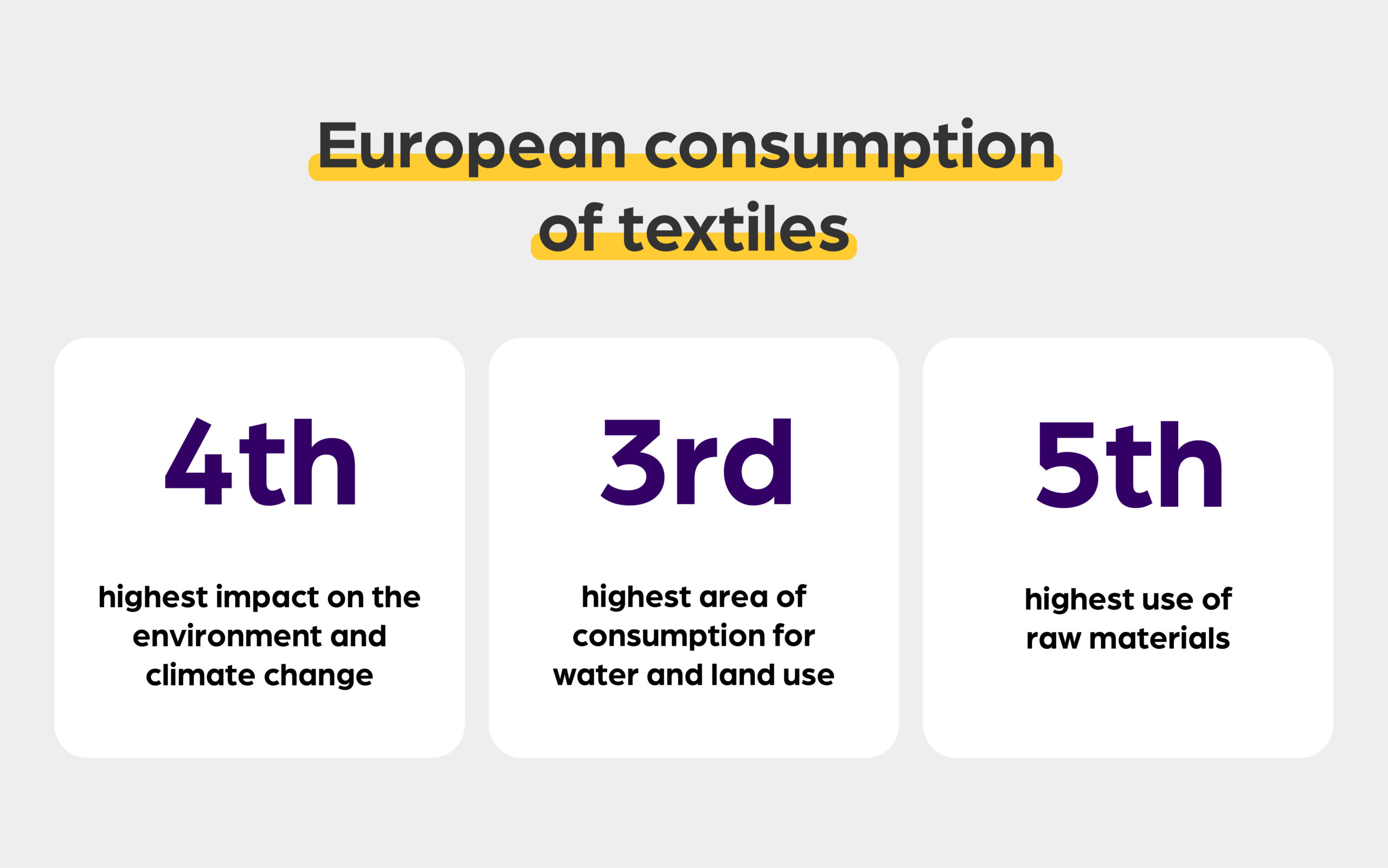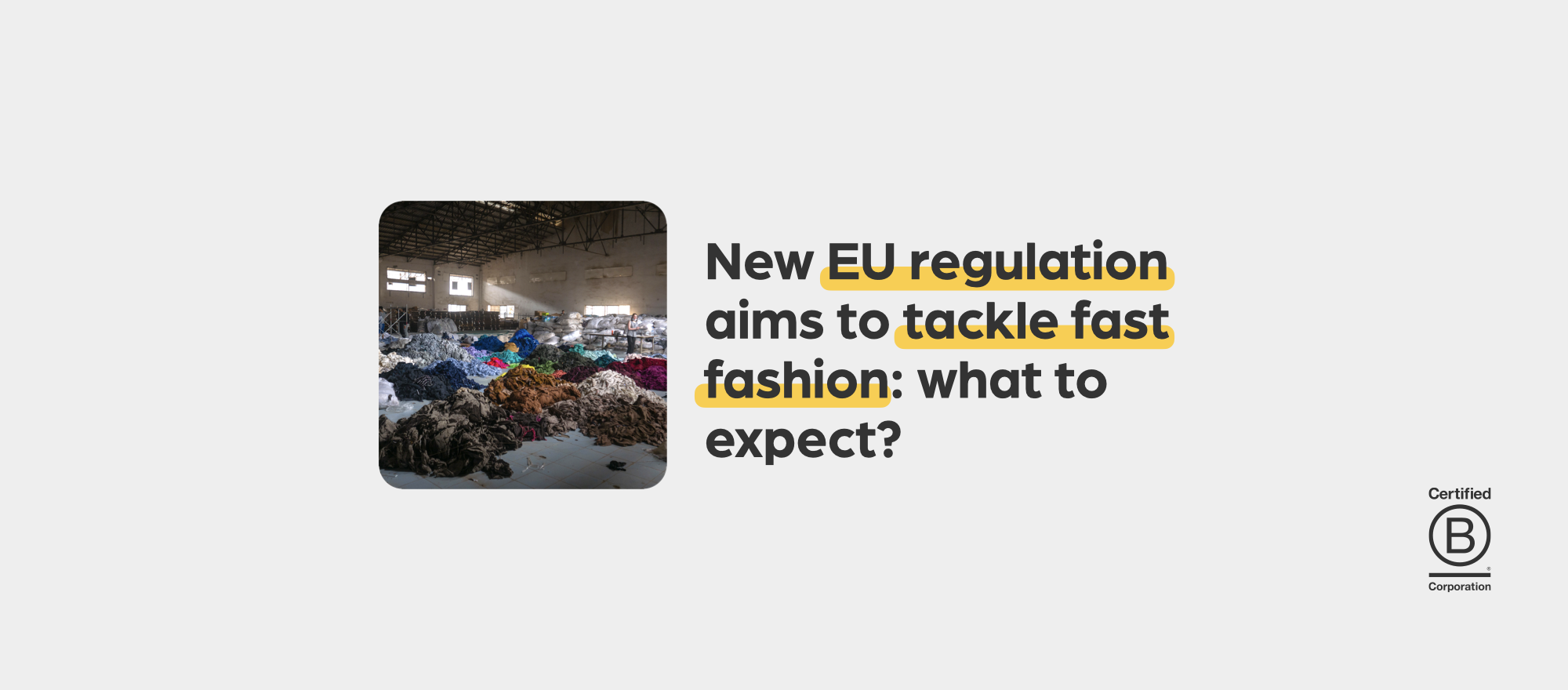Page content
The European Commission presented a package of European Green Deal sustainable regulations to boost circular business models and empower consumers. An important aspect of this new strategy is to tackle fast fashion, textile waste, and the destruction of unsold items. And of course, there’s also the ethical aspect: textiles need to be produced taking into account all human and labor rights. So what’s this new sustainable regulation about and what does it mean for fashion brands and manufacturers?
The EU Strategy for Sustainable and Circular Textiles
- Tackling the release of microplastics from textiles
- Ensuring the accuracy of green claims to avoid greenwashing (finally!)
- Boosting circular business models
- Making reuse and repair services economically profitable so they become widespread

EU measures for fashion
The EU has already proposed a number of specific sustainable regulations for the fashion industry:
- New design requirements for textiles: a.o. mandatory minimums for the inclusion of recycled fibers, making products longer-lasting and easier to repair and recycle.
- Banning the destruction of unsold products under certain conditions
- Clearer product labeling and a Digital Product Passport that contains key information on product circularity and environmental aspects
- A mandatory EU extended producer responsibility scheme and economic incentives to make products more sustainable
- Supporting the research, innovations, and investments needed for this transition
- Calling on companies to reduce the number of collections they launch per year
- Asking EU member states to adopt favorable taxation measures for the reuse and repair sector.
What does this mean for fashion brands and manufacturers?
This means that the negative impacts of the sector will be monitored more closely from now on. Fashion brands and manufacturers will need to integrate sustainability, circularity, transparency, and traceability into their overall business strategy:
- Sustainability and circularity: a strong focus on minimizing the environmental footprint of products and on making products more long-lasting, easy to repair and recycle
- Transparency and traceability: more transparent labels and more transparency on the entire supply chain. We already see a big rise in traceability platforms and apps, using blockchain technology to validate information most of the time. We expect this rise will speed up drastically.
This new EU sustainable regulation also means that the race for big fashion brands to claim a specific sustainability position in the market will become more pressing. We can only hope that this time it doesn’t lead to hollow slogans, but inspires true change. Traceability platforms like TrusTrace and Made2Flow can play an important role in this. By now, I think it has become very clear that the brands that limit themselves to doing the bare minimum will lose their momentum in the long term.
For those pioneering, bold fashion brands that already put circularity, sustainability, ethics, and/or traceability at the core of their business model, this means that the number of (big) competitors will increase tremendously. If you’re one of those companies, now’s the time to define your long-term game plan. You know what’s coming, how are you going to use that to gain a competitive advantage rather than being passed by less ambitious organizations who can spend more on their marketing? We also expect to see a lot of large organizations taking over the pioneering, already sustainable brands. To gain their expertise and their image.
Let’s seize the opportunity
You’re a fashion brand and you need help to turn this new regulation into a major competitive advantage? We’re here to help.
Learn from our customers
- Fashion for Good: the world’s first and biggest sustainable fashion museum and sustainable fashion innovation programme. Fashion for Good searches the globe for the most promising sustainable fashion startups and helps them to scale through (a.o.) an accelerator programme and funding.
- Global Fashion Agenda: fosters industry collaboration on sustainability in fashion to drive impact. GFA is the organizer of the largest business event on sustainability in fashion, the Global Fashion Summit.
- New Cotton Project: Twelve pioneering players are working together to demonstrate an entirely circular model for commercial garment production.
- Organic Cotton Accelerator: OCA wants to unleash organic cotton’s full potential for positive impact. They unite the sector to challenge ‘business as usual’, increase global organic cotton supply, empower organic cotton farmers, and provide a roadmap for systemic change.
So will fast fashion and its negative impact disappear soon?
We can only hope that will be the case, but if we’re honest, we don’t think so. This sustainable regulation is definitely an ambitious step in the right direction, though. We have to give the big players the time to radically shift their business model, while at the same time push them to not settle for industry minimums.
We love the ambition of the EU to stop greenwashing, but it remains unclear how they are going to track this. Who will define the standards and the line between greenwashing and valid information? Last but not least, we would have loved to see more focus on the ethical and social challenges of fast fashion as well. We don’t see enough focus on these aspects when we look at the measures that are proposed now.
Collective action, between different businesses, but also between businesses and governments is the only way to tilt the scale. So in the end, we are feeling optimistic about this major step taken by the EU Commission. A lot of organizations needed this push. Now it’s up to all relevant governments and businesses to take up their responsibility and make sure that all these beautiful words are finally turned into effective actions.




